Children's crochet blankets are a relevant thing for every mother. Depending on the scheme and description of the pattern, the blanket can be made elegant or everyday, for winter or summer, separately for a boy or a girl.
Choosing yarn and hook for crocheting a blanket for children
Even though the blanket usually doesn't come into contact with the delicate skin of a small child, it's still important what yarn it's made of. You should immediately avoid prickly and coarse yarn, as its fibers can penetrate through thin knitwear and touch the child, causing discomfort.
You should also avoid knitting blankets from fluffy and fuzzy yarn, such as mohair, the lint of which can easily get into the baby’s eyes, nose and mouth.
It is necessary to approach wool yarn with caution, since when using it you need to be sure that the child is not allergic to wool. To make wool thread soft, manufacturers add a small amount of acrylic to its composition.
If the baby is prone to allergies, it is better to choose synthetic threads. Acrylic yarn has a wide range of colors and textures of threads and allows you to make beautiful blankets, even with the simplest patterns.
Modern acrylic yarn is safe for children, but if a mother is still afraid to use it, then a good alternative would be viscose thread. This is an artificial material, but unlike acrylic, it is not synthesized in a chemical laboratory, but obtained by processing wood.
Examples of children's yarn popular with knitters:
| Woolen | Alize Cashmira |
| Semi-wool | Nako «Bambino Matik» |
| Acrylic | Alize "Sekerim Baby", Pekhorka "Children's novelty" |
| Yarn with added viscose | Pekhorka Pearl |
The appearance of the blanket will depend not only on the yarn, but also on how correctly the hook is selected for the job. Too thick a tool will make the fabric loose, and a thin one will make it dense.
There are 3 options for determining the required hook size:
- The manufacturer indicates the recommended size on the yarn packaging. If the packaging has not been preserved, but the name of the yarn is known, then the information can be found on the Internet.
- Using a ruler, measure the thickness of the thread and subtract 1 mm from the resulting value. This will be the hook number.
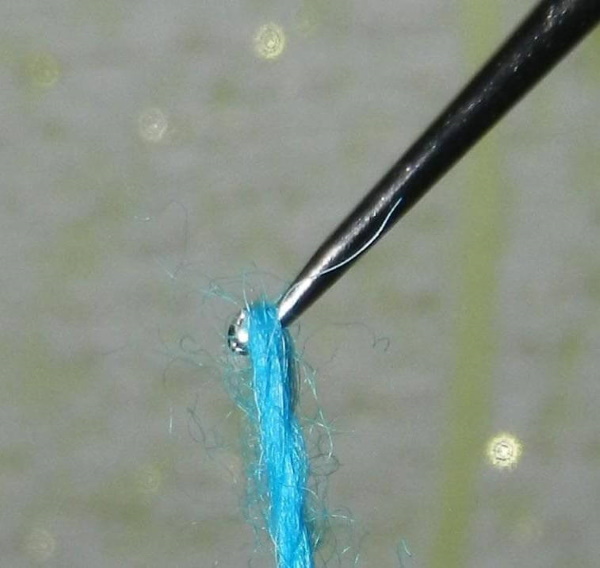
- The hook must be caught by the thread. The head of the hook must be at the same level as the working thread. If the head protrudes, the hook is too thick, if it is not visible at all, it is thin.
Calculating the amount of yarn for the size of a baby blanket
Crochet baby blankets, the patterns and descriptions of which are presented in the article, usually have an indication of the required amount of yarn from a specific manufacturer.
However, you will have to calculate the yarn yourself if:
- Other yarns are used, which may differ in thread thickness and composition.
- It is necessary to knit a blanket of individual size. For example, it is more convenient to have a square blanket for a crib, and a rectangular one for a stroller.
- When making changes to the knitting pattern.
If there is no description of the blanket, then you need to know that the thread consumption is affected by:
- Hook thickness.
- The chosen pattern. For example, the openwork pattern is the most economical in terms of yarn.
- Knitting type: A blanket made of individual motifs will require more yarn than a product made of a whole piece of fabric.
- The size of the future product.
- Individual characteristics of the knitter, for example, the tension of the thread during knitting.
Experienced needlewomen always recommend starting work on a product by making a 10 x 10 cm sample, knitted with the main pattern.
To independently calculate the required amount of yarn, you need to do the following:
- Make a sample, wash it, dry it and iron it.
- After this, you need to write down the exact dimensions of the resulting knitted sample.
- Then it should be unraveled and the length of the thread measured.
- Next, you need to decide on the desired size of the baby blanket. Usually, baby blankets for the crib are made square with the following dimensions: 80 cm * 80 cm, 90 cm * 90 cm or 100 cm * 100 cm.
- To determine the length of thread required to knit a blanket, the total area of the product should be multiplied by the obtained length of the sample thread and the result should be divided by the area of the sample.
The second calculation option is to measure the sample mass. In this case, the calculation will be in grams of yarn: the area of the blanket must be multiplied by the sample weight and also divided by the area of the sample.
Types of patterns for blankets, knitting patterns
Crochet baby blankets, the patterns and descriptions of which are described in the article, differ in patterns. A simple pattern can always be "played up" with yarn with an interesting thread structure or coloring. Or, as in the example below, use yarn colors with a smooth transition between colors. But such a blanket will also look good in traditional colors (pink and blue).
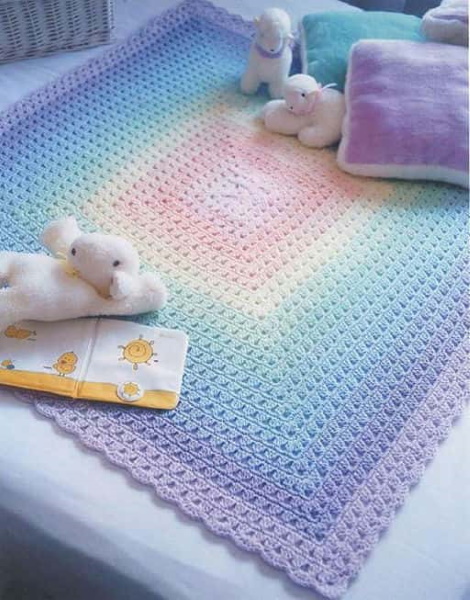
At a quick glance at the photograph, it may seem that it is difficult to make such an effective drawing.
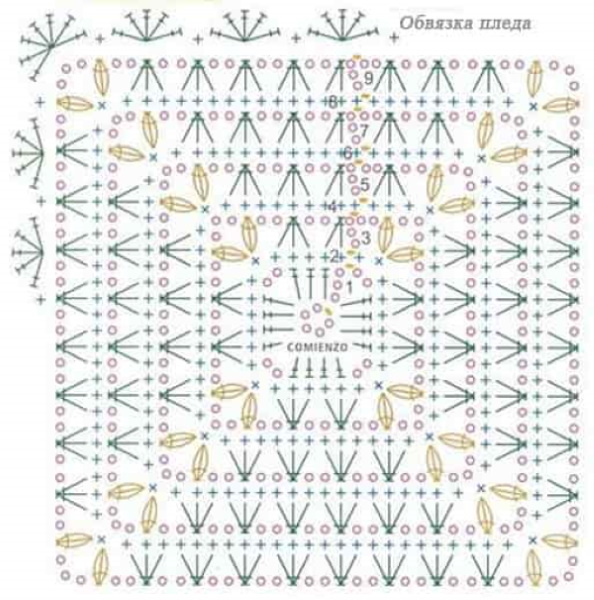
However, the multi-colored inclusions are obtained due to the fact that after 1 row of white yarn, a row of colored yarn is knitted, where ch loops and sl sts are alternated.
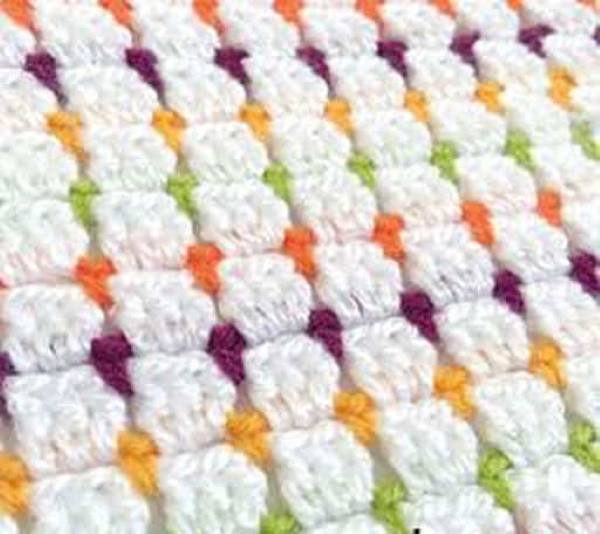
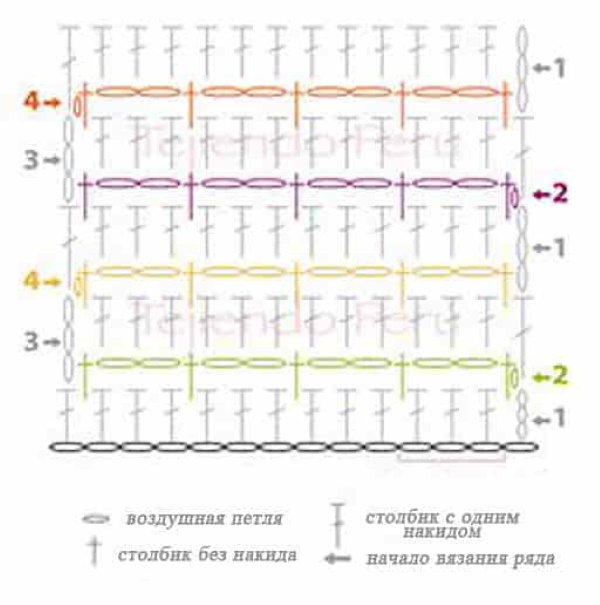
If you have a lot of leftover yarn of different colors in your home, it is recommended to choose a blanket model knitted from motifs; in addition, such a product is easier to knit.
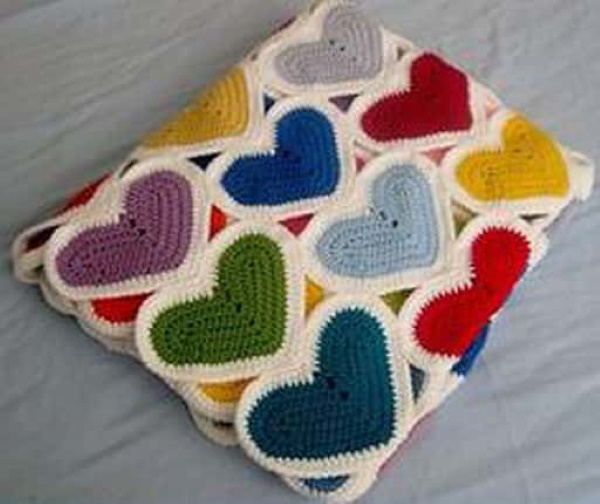
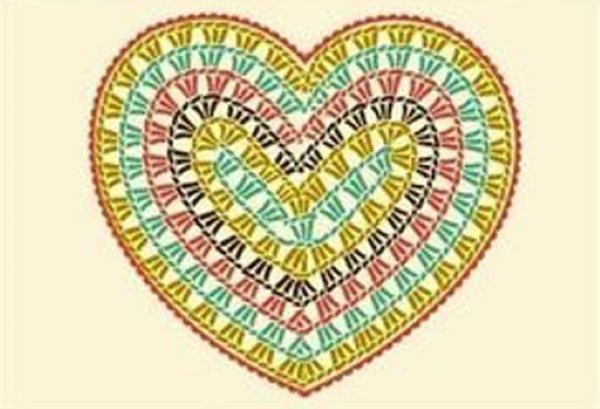
A bedspread with voluminous flowers not only looks impressive, but also has a massage effect for the baby.
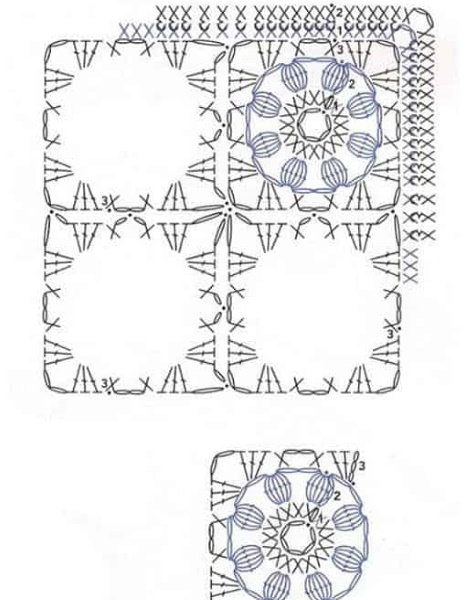
The pink blanket with hearts has more of a decorative function. It can be used to cover a crib or a baby in a stroller.

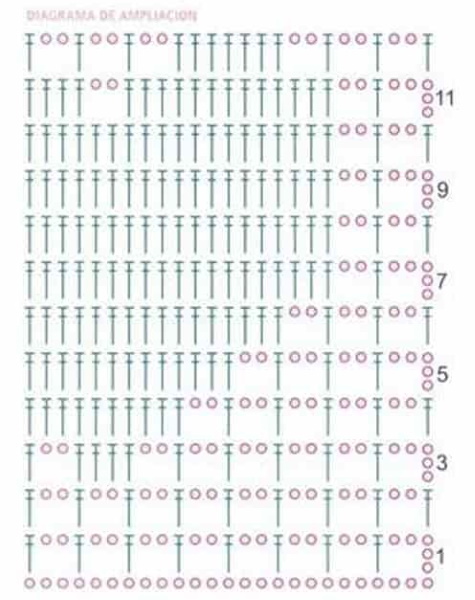
An interesting solution is to use various decorative elements in the blanket, for example, pompoms. A fairly simple image of a hare immediately becomes cute and original.
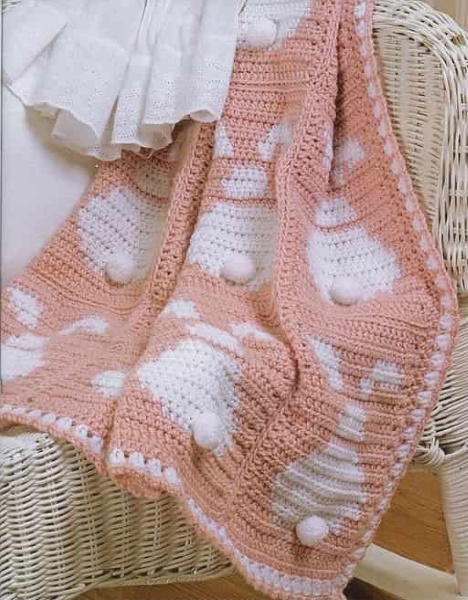

The design does not necessarily have to be knitted on the blanket. It can be done separately and then sewn on. Children will be happy to touch such an applique, developing tactile sensations.

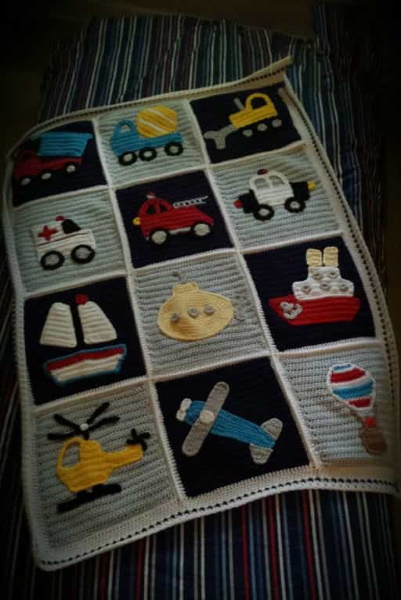
Step-by-step instructions for knitting a baby blanket for a girl
Children's blankets crocheted from repeating motifs, the patterns and descriptions of which are provided in open sources, give great scope for imagination and allow you to use leftover yarn in your work.
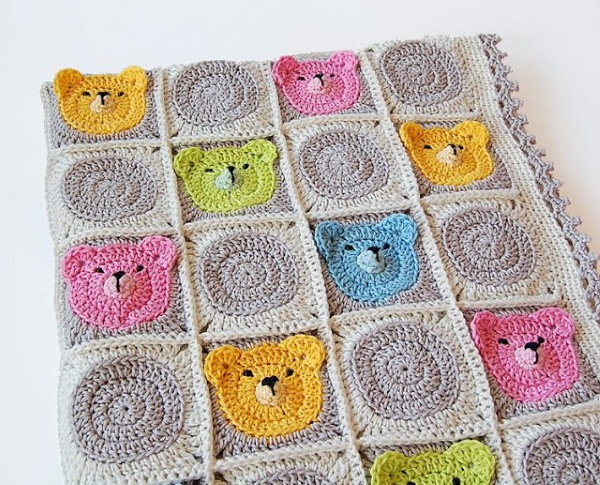
For a blanket with bears you will need a hook No. 3.5 and yarn called "Carolina". For each color you will need 100 g of yarn (in 1 skein 427 m or 100 g).
Stages of work:
- It is necessary to make 6 ch loops from dark pink yarn, close their ring with a half-column, and then knit another 2 ch loops for lifting.
- The next row is made with single crochet stitches. Number of stitches – 6.
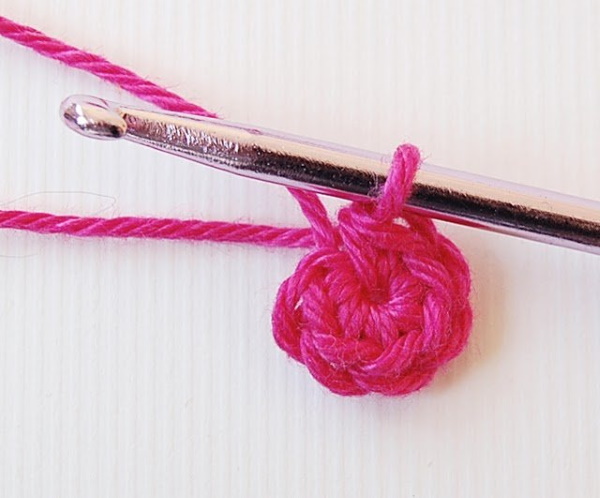
- Continue knitting with light pink yarn. Before knitting it, you need to string 2 beads on the thread for the future eyes. In each loop of the bottom row, you need to make 2 dc. with a yarn over. In the same row, you should make the bear's eyes. The distance between them is 5 dc. with a yarn over.
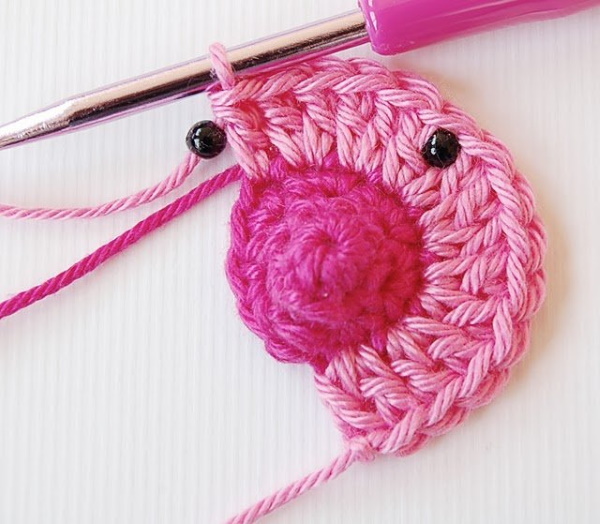
- At the end of the row, you need to close it using a half-column, and then make 2 ch. loops for lifting.

- In the 3rd row, you should knit double crochets, and in every 4th column of the bottom row you need to knit 2 double crochets.
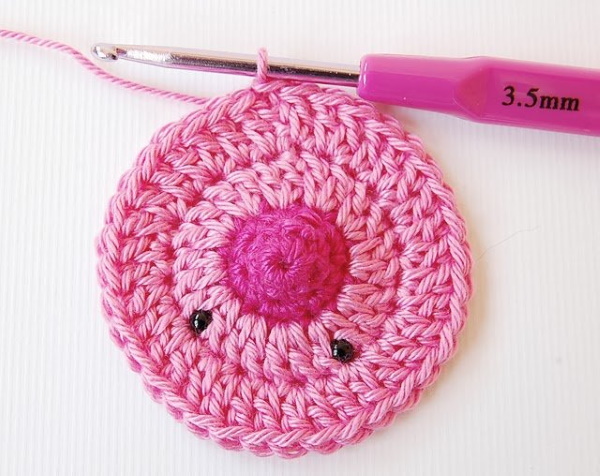
- Relative to the eyes, you need to mark where the corners of the motif will be located. The final row is made with blue yarn and dc. crochets. For 5 loops before and after the corner, the columns must be made with 2 dc, and between them, knit 2 dc. loops, which will form the corner.
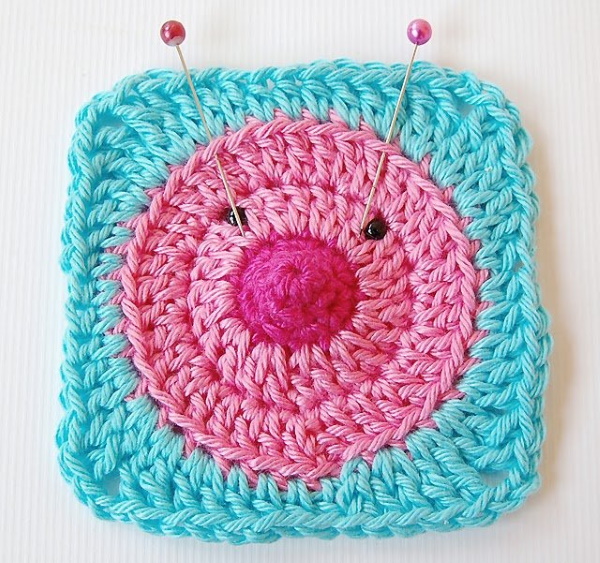
- The bear's ears should be made symmetrically relative to the eyes. To do this, you need to knit an arch of 3 ch. loops, and knit 7 st. with a yarn over into the resulting arch.
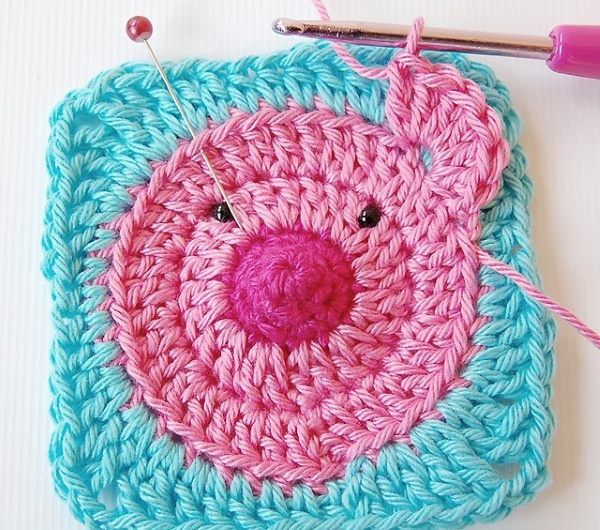
- Using a regular black thread and a needle, make the muzzle.
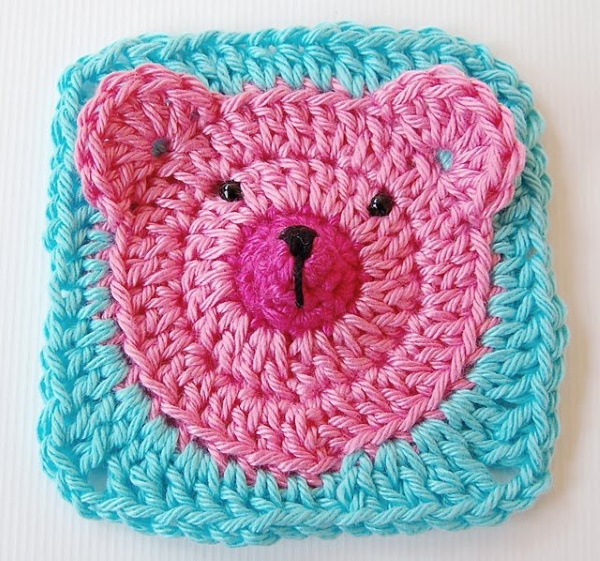
- The size of the blanket will depend on the number of prepared motifs. To prevent the blanket from appearing too voluminous, it is better to alternate the motifs with bags with simple motifs.
- The squares can be sewn together with a needle.
- To give the product a finished look, it is recommended to make an edging. To do this, the blanket should be tied around the perimeter with the following pattern: single crochet, 5 ch. loops, 2 single crochet. In the second row, in each arch, you need to make 3 single crochet, picot, and again 3 single crochet.
Step-by-step instructions for knitting a baby blanket for a boy
There are no fundamental requirements for how a blanket for boys should look. The pattern can be any, but you need to pay more attention to the openwork, if it is too reminiscent of a flower. It is also better to avoid bows, both in the decoration and the pattern. The more modest the pattern, the better.
The color range can be quite extensive - traditional light blue, blue, yellow, light green, white, beige, red, green. The presented blanket is ideal for a boy, both in color and in the pattern reminiscent of waves. The size of the finished product is 80 cm * 97 cm.
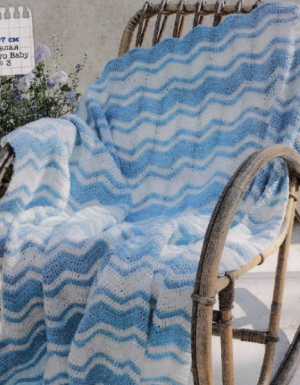
Materials required:
- hook (No. 3);
- SMS Bravo Baby yarn, blue and white, 2 skeins each (total – 200 g).
Basic pattern.
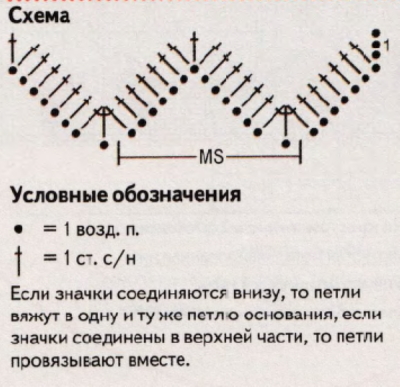
Stages of work:
- With blue thread, cast on 187 sts and make 3 loops for lifting to the 2nd row.
- Then knit 6 dc into each ch loop.
- The 7th column must be left on the hook, not knitted to the end, and the 8th column must be made in the same way. The 9th st. with a yarn over should be knitted together with the 7th and 8th.
- In the next 6 rows of loops, 6 double crochets are made, and in the 7th row, 3 double crochets are made at once.
- Next, the pattern must be repeated according to points 2 - 4.
The colors need to be alternated in the following sequence: 3 blue rows, 1 white, 1 blue, 3 white, 1 blue, 1 white and then repeat from the beginning.
Blanket for swaddling newborns
Crochet baby blankets, the patterns and descriptions of which are discussed in the article, are good because they are knitted quickly, and the use of multi-colored yarn scraps in such products looks harmonious.
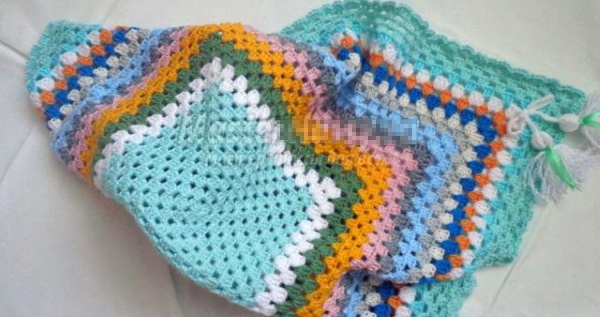
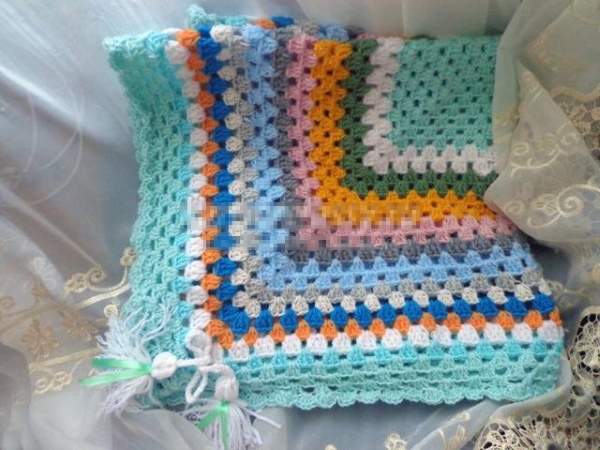
For a blue striped blanket measuring 80 cm * 80 cm, you will need several colors of non-prickly yarn. Ideally, it will be hypoallergenic, which is usually indicated by the manufacturer on the packaging. The product should be knitted with a hook No. 2.5.
Basic pattern diagram:
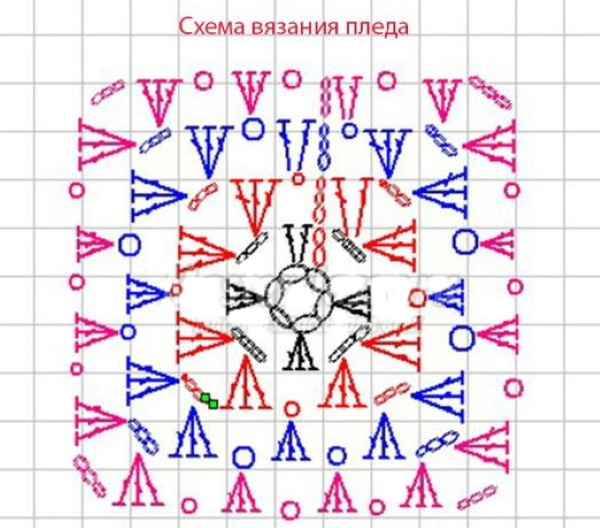
Stages of work:
- Using the main color (in this case, it is blue), cast on 6 sts, closing them into a ring.
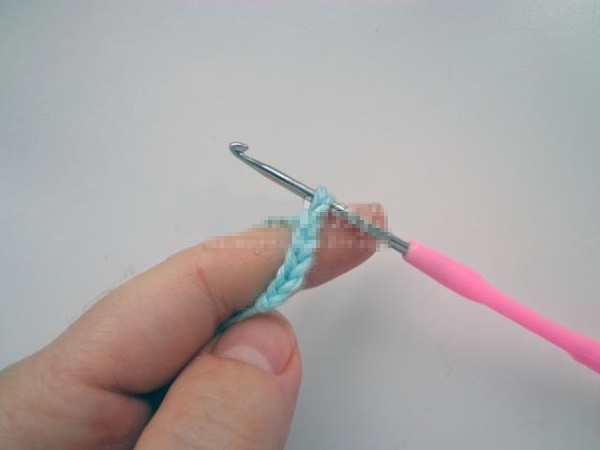
- Then you need to knit 2 ch loops and 2 dc into the resulting ring.

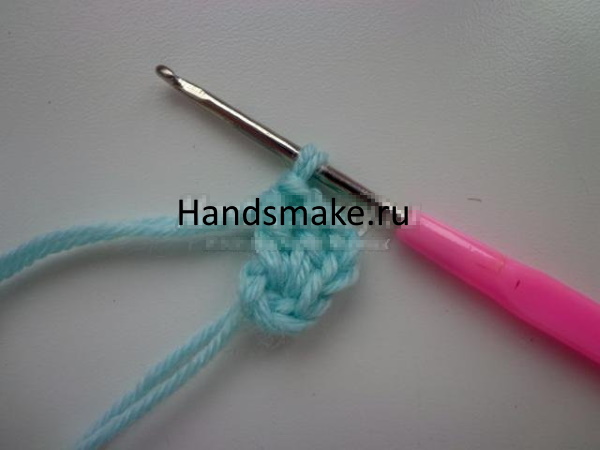
- Then repeat, knitting 3 ch loops and 3 dc.

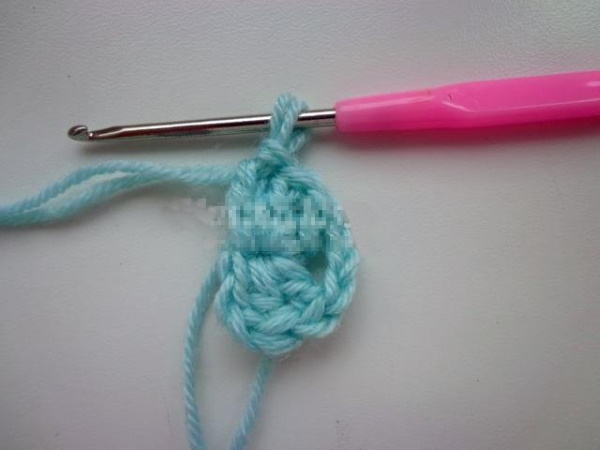
- Point 3 should be repeated twice more.
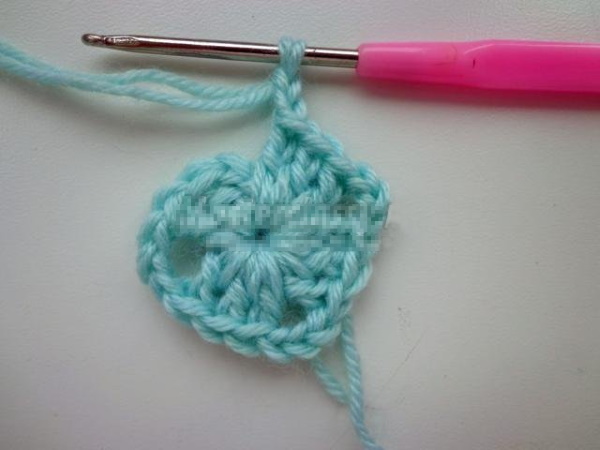
- You need to close the row with a half-column, connecting the last double crochet with the first of this row.
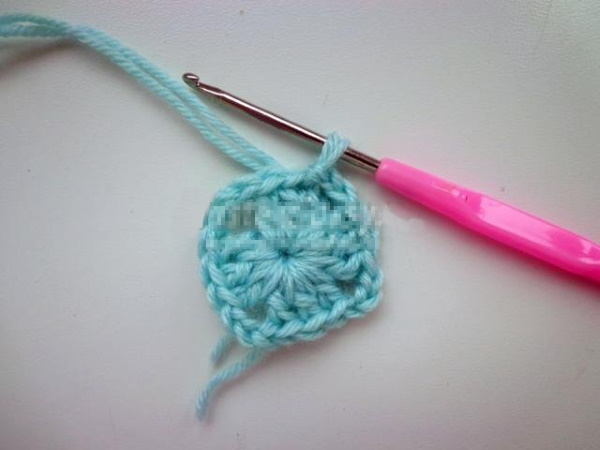
- The second row begins with knitting 4 ch loops.
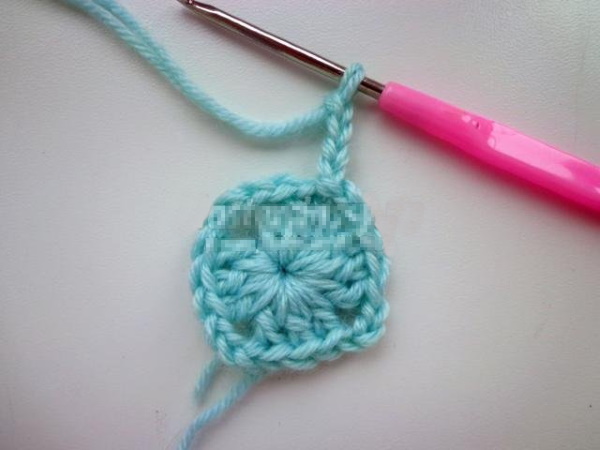
- Then you should make 3 dc. Moreover, they should be knitted into the arch from the dc. loops of the previous row.
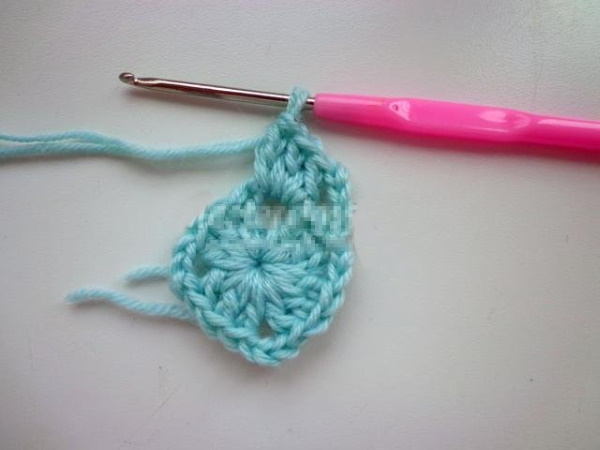
- Next, you need to make 3 more ch loops and knit them into the same arch as in step 7.

- Continuing to knit, you should make 1 ch loop, then in the 2nd arch from the ch loops of the bottom row, you need to knit first 3 dc with a yarn over, then 3 ch loops and again 3 dc with a yarn over.
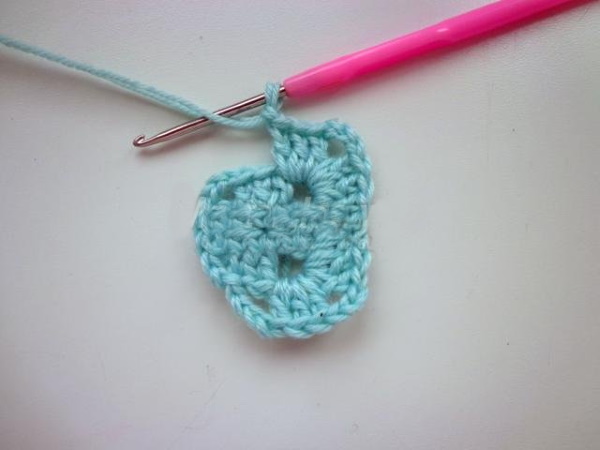
- The knitting pattern from point 9 must be repeated the required number of times until the end of the 2nd row.

- The remaining rows should be knitted according to the pattern.
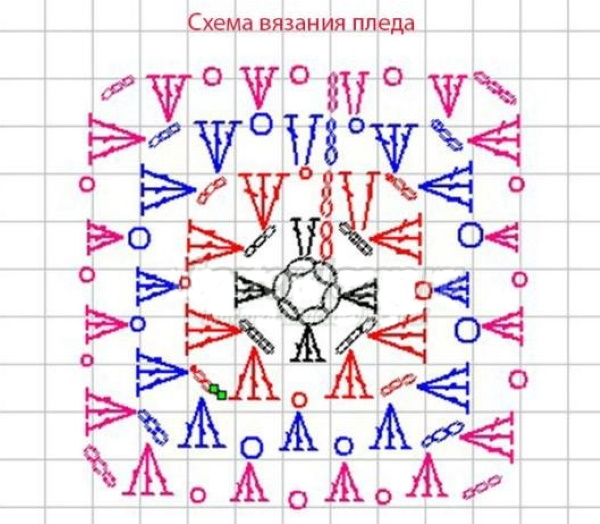
- The main color should be used for 10 rows.
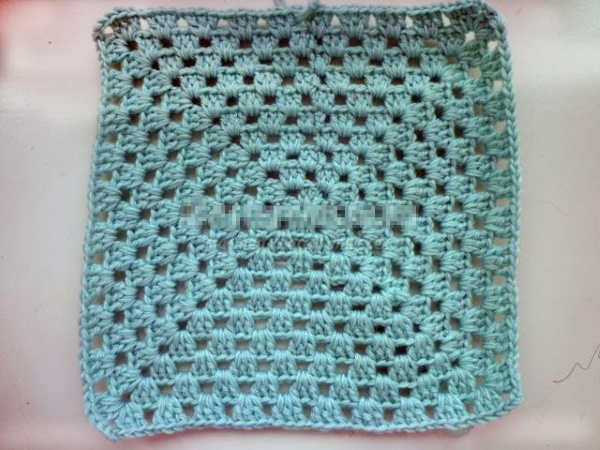
- Next you need to knit with other colors.
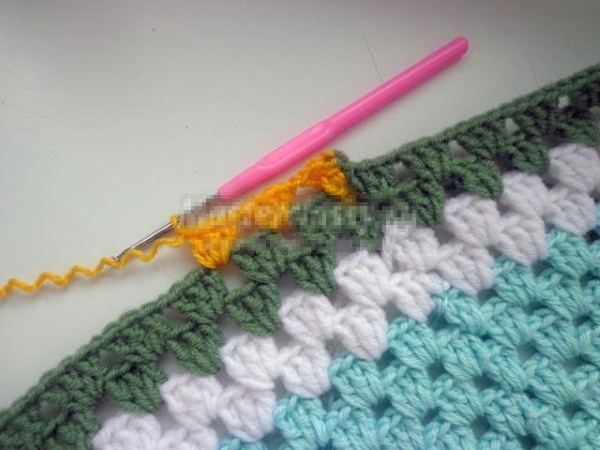
- The number of rows performed with each individual color does not necessarily have to be as in the example, but may depend on the amount of thread available.

- In the presented blanket you need to knit 2 rows with white thread, then 2 rows with green, 3 rows with yellow, 2 rows with pink, 1 row with gray, 2 rows with bright blue, 1 row with light gray, then 1 row with white, and one row each with blue, orange and white yarn.
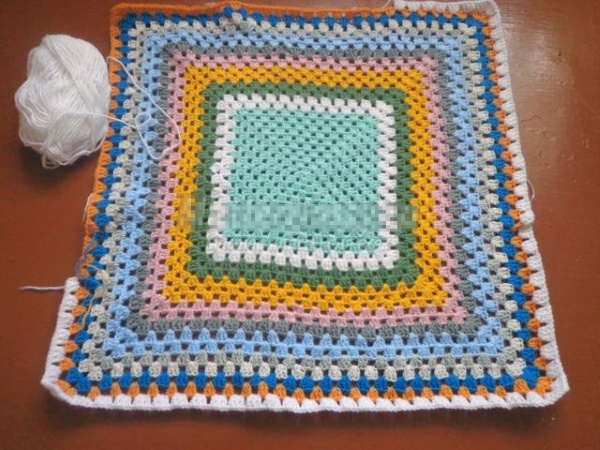
- The last 4 rows should be made from the main blue color.
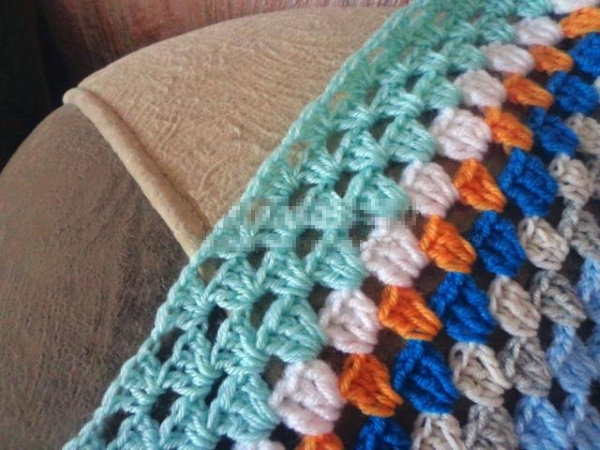
- Next, you need to make a binding for the product. To do this, you need to make 1 single crochet around the perimeter of the blanket, knitting them into each loop of the bottom row.
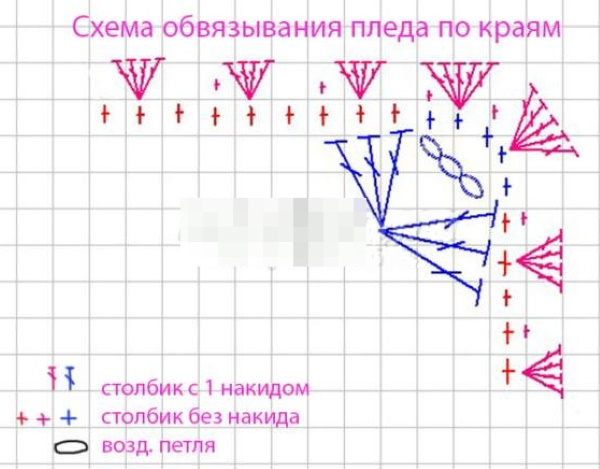
- The last row of the binding should be knitted according to the pattern: 1 ch loop, 4 dc in every 3rd loop of the previous row, 1 ch loop.
- You can decorate the blanket with tassels.

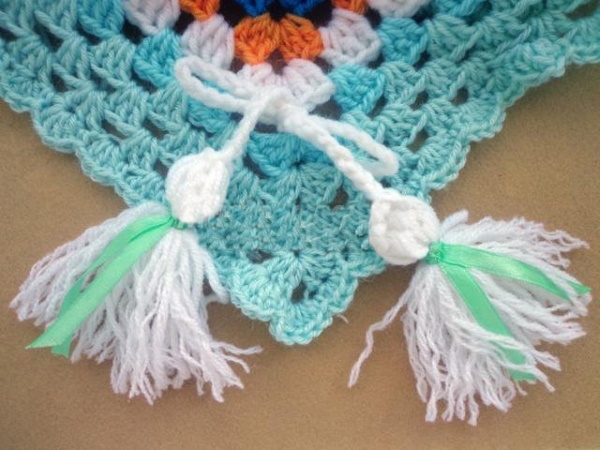
Ready.
How to Make a Border on a Baby Blanket
The border of the blanket must be selected depending on the purpose of the product, its main pattern and the type of thread.

The openwork pineapple border looks elegant and rich, so it is suitable for a blanket for going out or, for example, for a baby leaving the hospital. The width of the pineapples is about 10 cm. A thin satin ribbon of blue or pink color can be threaded into the base of the border.
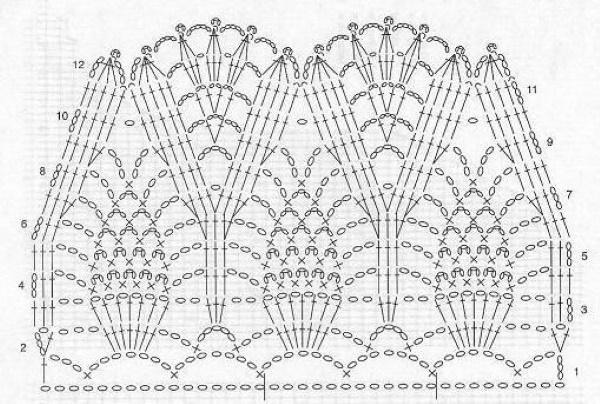
When a blanket is assembled from motifs, it is recommended to make the border as simple as possible, knitted in 1-2 rows. Various variations of scallops will do.
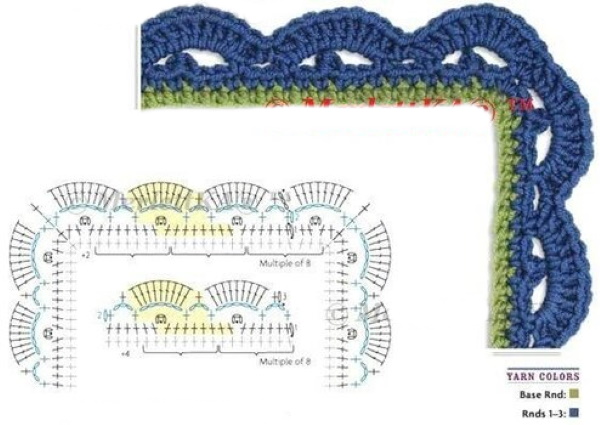
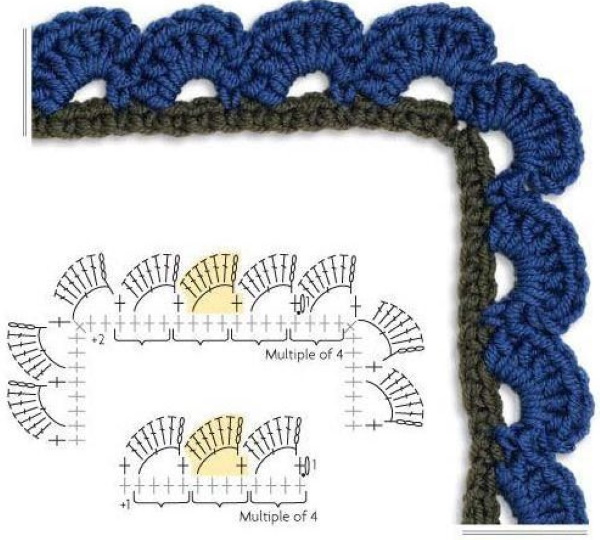

For warm and dense products, you can choose a border with voluminous details, for example, with bobbles. To knit such a bobble, you need to follow the pattern, make a single crochet, then knit 4 ch. loops. Then knit 2 ch. with a yarn, around which the bobble will be knitted.
It is necessary to grab the thread and pass it not into the loop of the lower row, but into the space between the first st. with a yarn over and the chain of st. loops, then grab the thread in the same way 3 more times, and then knit as when performing st. with a yarn over. The more such loop grabs you make, the more voluminous and dense the bobble will be.
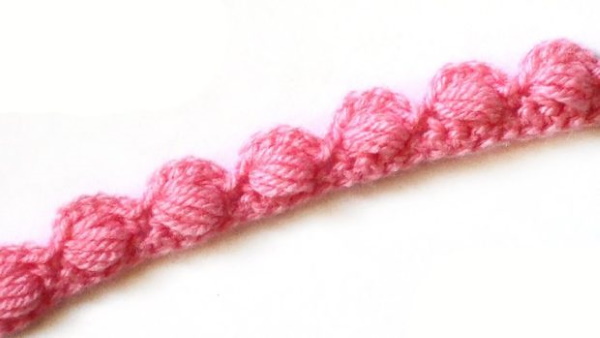
After this, you need to knit 1 ch loop and finish the bobble by knitting a single crochet, skipping one loop of the bottom row.
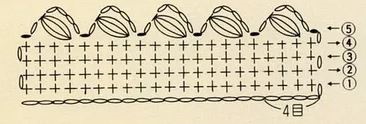
The variety of patterns and descriptions of baby blankets that can be crocheted is much greater than for knitting. Therefore, it is easy to choose a beautiful model for any occasion of the baby's life.
Author: Vorobyova Nadezhda
Article formatting:Lozinsky Oleg
Video about making baby blankets with crochet
Children's crochet blankets 90x70 cm, instructions:
